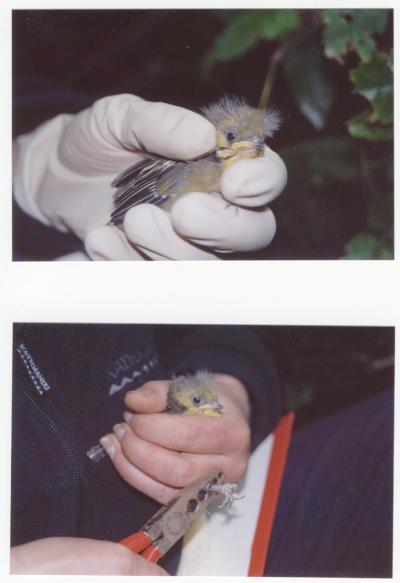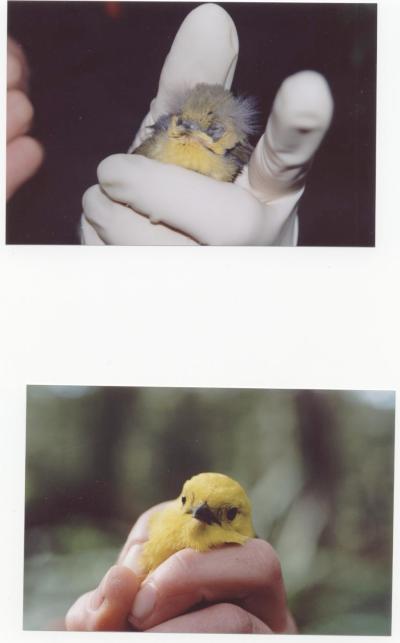Mohua breed successfully on offshore islands
4 March 2004

Mohua (yellowhead), a native forest bird facing extinction on the mainland, is thriving at new homes on predator-free offshore islands.
The Department of Conservation transferred 27 mohua to Anchor Is near Fiordland in spring 2002, and 39 to Codfish Is (Whenua Hou) near Stewart Is in March 2003, with sponsorship by North Island company B Dent Global.
Frequent sightings on both islands of adult mohua feeding chicks last summer signalled a successful breeding season, DOC outlying islands programme manager Pete McClelland said today.
“It’s fantastic news that the Whenua Hou mohua have bred within a year of translocation. They have adapted well to a different environment, with different kinds of food available, having come from a beech forest to a podocarp forest.”
Mohua have also been translocated to Nukuwaiata Is in the Marlborough Sounds, Breaksea Is and Chalkey Is in Fiordland, Ulva Is near Stewart Island, and Centre Is in Lake Te Anau.

The mohua – aka the bush canary for its bright and cheerful song - was a common South Island forest bird when European settlers arrived but a dramatic decline in numbers in the last 30 years has seen their disappearance from 75 per cent of their former range. Less than 5000 of the birds are thought to remain on the mainland at isolated beech forest sites.
Forest clearances and predation by rats, stoats and possums have been responsible for the decline. Rat and stoat plagues had a particularly severe impact on mohua in the summers of 1999-2000 and 2000-2001.
When its threatened species classification was reviewed in 2001 mohua was classified as nationally-endangered with the qualifiers: human-induced range contraction, and extreme fluctuations in population.
DOC intensively traps stoats and rats at mohua sites in the Hawdon and Hurunui valleys in North Canterbury. This model is to be applied at other South Island sites, and to protect other species such as whio (blue duck) as part of an emergency response scheme known as Operation Ark.
Research on mainland populations had shown that intensive predator control during predator plagues improved mohua breeding success to 80 per cent, compared to 36 per cent at unprotected sites, Mr McClelland said.
“The department’s Mohua Recovery Plan covers species protection on the mainland, as well as the island programes. We want these birds heard more widely in our forests.”

ENDS


 Bill Bennett: Download Weekly - 100% claim lands One New Zealand in criminal court action
Bill Bennett: Download Weekly - 100% claim lands One New Zealand in criminal court action FSCL: Woman Scammed Out Of $25,000 After Job Offer On LinkedIn
FSCL: Woman Scammed Out Of $25,000 After Job Offer On LinkedIn NIWA: Cheers To Crustaceans - New Species Named After Welly Brewery
NIWA: Cheers To Crustaceans - New Species Named After Welly Brewery MBIE: Trans-Tasman Earth Observation Research Studies Confirmed
MBIE: Trans-Tasman Earth Observation Research Studies Confirmed NZ Association of Scientists: Royal Society Te Apārangi Governance Submissions Close - NZAS Submission
NZ Association of Scientists: Royal Society Te Apārangi Governance Submissions Close - NZAS Submission HortPlus: Project Aims To Improve Quality Of Weather Data In New Zealand
HortPlus: Project Aims To Improve Quality Of Weather Data In New Zealand



